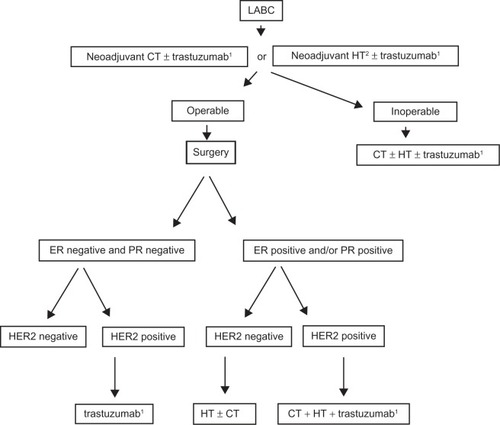Figures & data
Figure 1 HER family receptors. Epidermal growth factor family (ErbB) receptors are characterized by an extracellular domain (ECD), consisting of two Leu-rich ligand-binding subdomains (LR) and two Cys-rich subdomains (CR), a α-helical transmembrane domain and a intracellular domain (ICD), comprising the catalytic protein tyrosine kinase subdomain (PTK) and multiple regulatory tyrosine residues which become phosphorylated on receptor activation. The crosses on the human epidermal growth factor receptor 2 (HER2) ligand-binding domains indicate their lack of functionality and on HER3 protein tyrosine kinase subdomain indicate that it is catalytically inactive.
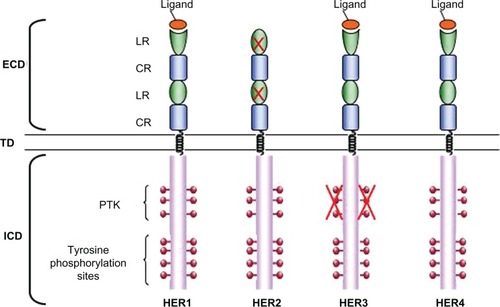
Figure 2 HER2 pathway. Ligand binding to the extracellular domain of human epidermal growth factor receptor (HER1/3/4) stabilizes the formation of active HER2 heterodimers. Transphosphorylation of tyrosine residues within the intracellular domains results in kinase domains activation. Phosphorylation creates binding sites for adaptor or effector proteins (SOS and PI3K) that activate mitogen-activated protein kinase (MAPK) and phosphatidylinositol-3-kinase (PI3K)-Akt pathways. These pathways result downstream in transcription of genes driving cell proliferation, migration, differentiation, and apoptosis.
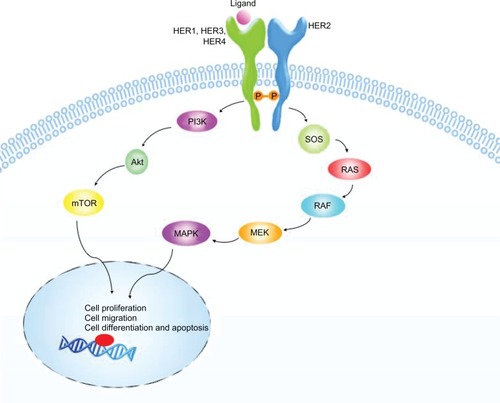
Figure 3 Mechanisms of action of trastuzumab. A) Trastuzumab may cause immune activation by recruiting natural killer (NK) cells, leading to cancer cells lysis. B) Trastuzumab may physically block either human epidermal growth factor receptor 2 (HER2) homodimerization or heterodimerization with other HER family partners. C) Trastuzumab may inhibit the shedding of HER2 extracellular domain, preventing the formation of p95. D) Trastuzumab may reduce the signaling from downstream pathways by the internalization and degradation of HER2.
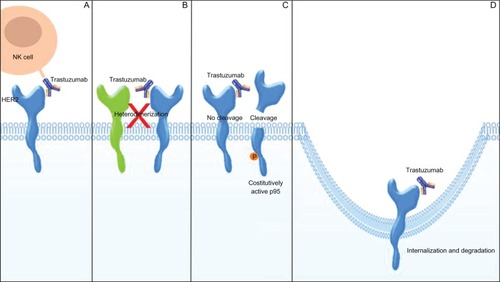
Figure 4 Proposed algorithm for the treatment of operable male breast cancer.
Note:1T ≥ 1 cm/N+; Levels of evidence, there is insufficient evidence to support the use of trastuzumab in early male breast cancer.
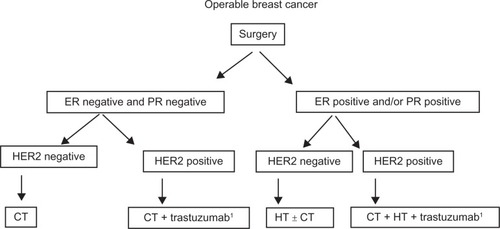
Figure 5 Proposed algorithm for the treatment of locally advanced (inoperable) male breast cancer.
Note:1HER2-positive tumors; 2ER positive and/or PR positive; Levels of evidence, there is insufficient evidence to support the use of trastuzumab or neoadjuvant CT in male breast cancer setting.
